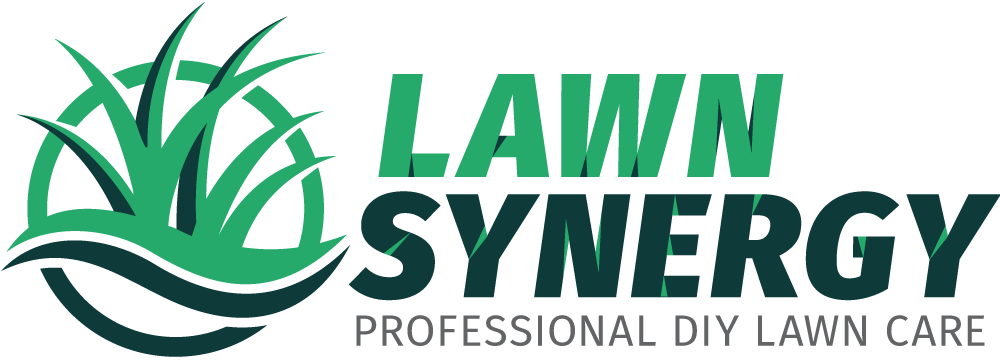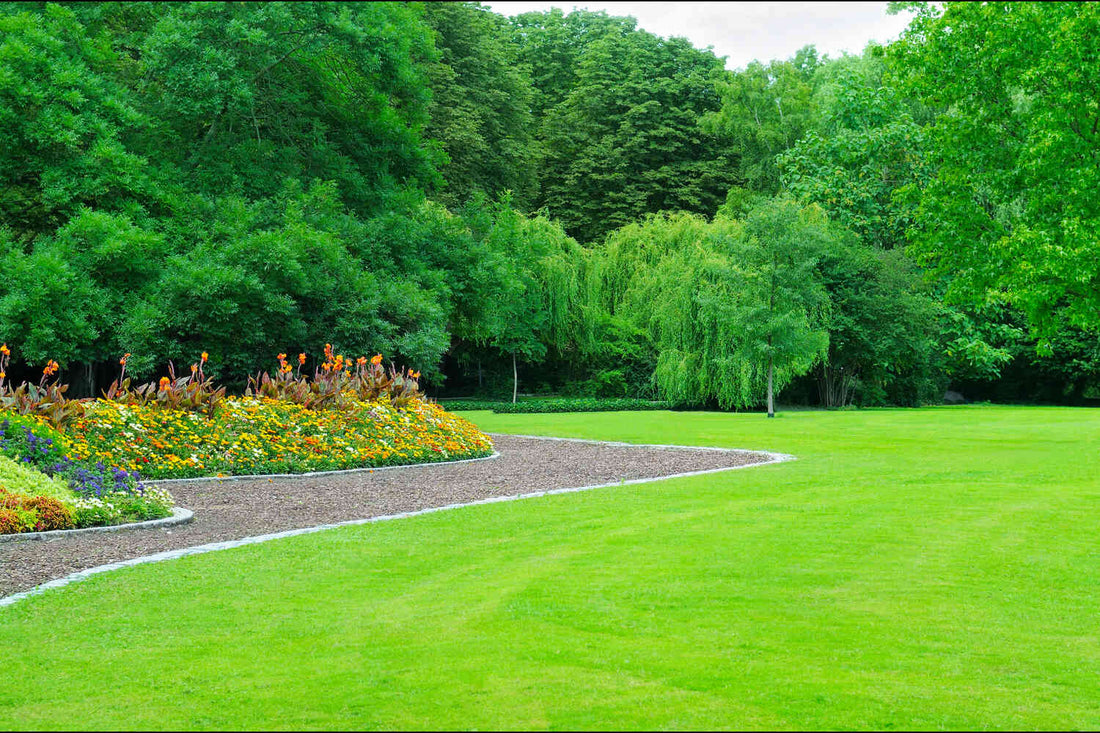Timing is everything—and if you're wondering when to apply pre emergent in South Carolina, you're already one step closer to a perfect lawn.
Whether you're battling crabgrass in the spring or poa annua in the fall, getting the application window right is what sets success apart from frustration.
At Lawn Synergy, we work with homeowners who are serious about their results. No filler products. No guesswork.
Just professional-grade weed control made simple, with the tools and support to back it up.
We've taken the same premium products used on estate lawns, added nutrient boosts, and packaged them for homeowners who want more than just an average yard.
Because with Lawn Synergy, it's not just lawn care—it's teamwork.
What this article covers:
- Why Timing Is Crucial for Pre-Emergent Success in South Carolina
- Understanding Weed Germination Cycles in SC's Climate
- Consequences of Poorly Timed Applications
- When to Apply Pre-Emergent in Spring
- Soil Temperature Guidelines for Early Weed Control
- Spring Application Window by Upstate, Midlands, and Coastal Zones
- Fall Pre-Emergent Timing for Winter Annuals
- How Grass Type Affects Your Pre-Emergent Schedule
- Tools and Tips to Track the Right Application Time
- Watering and Weather Considerations
- Common Mistakes South Carolina Homeowners Make
- Coordinating Pre-Emergent With Other Lawn Treatments
Why Timing Is Crucial for Pre-Emergent Success in South Carolina
South Carolina lawns see it all—heat, humidity, and year-round weed pressure.
That's why timing pre-emergent right is the foundation of any strong lawn care program. Miss the window, and weeds take root. Hit it on time, and you stop them before they even sprout.
Understanding Weed Germination Cycles in SC's Climate
Weeds follow soil temperature—not your calendar. In South Carolina's mild climate, weed seeds germinate earlier and more often than in cooler states.
Spring annuals like crabgrass start sprouting once soil temps reach about 55°F. Fall annuals like poa annua kick off when temps fall below 70°F. Knowing this cycle is key to staying ahead of them.
Consequences of Poorly Timed Applications
Apply too early and your product breaks down before it's needed. Too late? Weeds are already sprouting.
A poorly timed pre-emergent wastes product, delays lawn recovery, and opens the door for invasive species. That's why Lawn Synergy offers real-time guidance tailored to your exact region and turf type.
When to Apply Pre-Emergent in Spring
Spring is your first and best shot to prevent warm-season weeds. But the calendar won't help you here—soil temperature is your guide.

Soil Temperature Guidelines for Early Weed Control
You want to apply a pre emergent herbicide when soil temperatures reach a steady 50–55°F for several days.
In South Carolina, this typically happens between mid-February and mid-March, depending on your location. This is the sweet spot to block crabgrass, goosegrass, spurge, and other warm-season invaders.
Spring Application Window by Upstate, Midlands, and Coastal Zones
- Upstate (Greenville, Spartanburg): Apply between March 1–15
- Midlands (Columbia, Sumter): Target February 20–March 10
- Coastal (Charleston, Hilton Head): Go early—February 10–25
These are averages. Your actual window depends on soil temperature. Use a thermometer or call us—we'll help you get it right.
Fall Pre-Emergent Timing for Winter Annuals
Fall brings a different kind of weed threat—winter annuals. These weeds germinate quietly, survive through winter, and explode in early spring. Stop them early, and your lawn stays clean year-round.
Common Cold-Season Weeds to Target
Poa annua, chickweed, and henbit are common winter weeds across South Carolina.
Left unchecked, they compete with your grass all winter and can smother spring green-up. Pre-emergent stops them before they break the surface.
Best Application Dates for Different SC Regions
- Coastal: Late August to early September
- Midlands: Early to mid-September
- Upstate: Mid to late September
Track when soil temps begin dropping below 70°F. Apply just before that benchmark and water it in.
How Grass Type Affects Your Pre-Emergent Schedule
Your lawn type plays a huge role in when and how you apply pre-emergent. Timing that works for Bermuda may not be right for Tall Fescue.
Warm-Season Turf (Bermuda, Centipede, Zoysia)
These grasses thrive in heat and go dormant in winter. You can safely apply pre-emergent in both spring and fall.
Just avoid disturbing the root zone during early green-up or dormancy. Lawn Synergy's enhanced blends work perfectly with these warm-season turfs, delivering weed control and nutrients without stress.
Cool-Season Turf (Tall Fescue in Transition Zones)
Tall Fescue needs a different approach. Since it's often overseeded in fall, you'll want to skip fall pre-emergent unless you're not seeding.
Stick with spring apps, and use Lawn Synergy's support team to help map out a plan if you're juggling seeding and weed control.
Tools and Tips to Track the Right Application Time
You don't have to guess—technology and a few smart habits can help you stay precise.
Using Soil Thermometers and Online Resources
A soil thermometer is your best friend. Measure 2–3 inches deep and check morning temps daily.
You can also use online tools like GreenCast or NC State's turf heat maps. For even easier tracking, our Lawn Synergy experts offer reminders and support based on your zip code.

Visual Signs That Signal It's Time to Apply
If your lawn starts greening up or you see tiny weeds popping through—you're late. That's why it's better to apply a few days early (if temps are close) than to risk missing the window entirely. Early birds win the weed war.
Watering and Weather Considerations
Water activates pre-emergent, but weather can also wash it away. Timing your watering or rainfall matters just as much as when you apply.
Ideal Conditions for Activating Pre-Emergent
After applying, aim for ½ inch of irrigation or rainfall within three days. This locks the product into the soil barrier. If it just sits on top, it can degrade or become ineffective.
Avoiding Washout or Delayed Absorption
Never apply pre-emergent right before a heavy downpour—excessive water can cause runoff or dilute the barrier. Similarly, avoid applying during dry spells unless you can irrigate. The balance matters, and we'll help you get it right.
Common Mistakes South Carolina Homeowners Make
Even experienced DIYers make these common errors. Here's what to avoid:
Missing the Window Due to Weather Shifts
South Carolina weather can change fast. A warm week in February? Suddenly, your soil temp hits 55°F and weeds start to germinate.
Don't wait for the perfect day—prepare and apply early if the conditions are close.
Applying Without Considering Grass Type or Lawn History
Each lawn has a story. If you overseeded last fall, don't apply a fall pre-emergent.
If you skipped pre-emergent last spring, expect a stronger weed presence. At Lawn Synergy, we help you plan based on history—not just hope.
Coordinating Pre-Emergent with Other Lawn Treatments
Planning around pre-emergent makes everything else work better—from fertilizing to overseeding.
Can You Fertilize at the Same Time?
In some cases, yes—but be strategic. Pre-emergent can be combined with light fertilizing if your lawn is actively growing and ready to absorb nutrients.
However, applying fertilizer too early may encourage weak top growth before roots are fully active.
If you're following best practices for when to apply pre emergent in Florida or when to apply pre emergent in Georgia, it's important to align your fertilization with your lawn's green-up phase rather than the herbicide application itself.
Lawn Synergy's fertilizer subscription makes this timing simple, sending you the right product exactly when your lawn needs it.

Pre-Emergent and Overseeding Timing Conflicts
If you're overseeding with Tall Fescue in fall, skip the pre-emergent. It blocks all seeds—weed or grass.
Instead, aerate, seed, and apply a pre-emergent in spring once your new turf is established. We'll help you time it right so you don't waste your effort.
Conclusion
So, when to apply pre emergent in South Carolina? In spring, aim just before soil temps hit 55°F—typically late February to mid-March.
In fall, apply when temps drop below 70°F—usually in September. Factor in your turf type, your region, and your lawn's past.
At Lawn Synergy, we don't just sell products—we partner with homeowners to build elite-level lawns using professional-grade solutions, custom recommendations, and real support.
Want a weed-free lawn that stands out in your neighborhood? Let's make it happen together.
If you want to learn more, check out these articles below
-
When to Apply Pre Emergent in Nc
- When to Apply Pre Emergent in Tennessee
- Best Pre Emergent
- Best Pre Emergent for Lawns
- Best Pre Emergent for Bermuda
- Best Pre Emergent for St Augustine
- Best Pre Emergent for Centipede Grass
- When to Apply Pre Emergent
- When to Apply Pre Emergent in Texas
- When to Apply Pre Emergent in Fall
- When to Put Down Pre Emergent in Spring
- When to Apply Crabgrass Pre Emergent
- How Long Does Pre Emergent Last?
- Is It Too Late for Pre Emergent?
- Does Pre Emergent Work?

